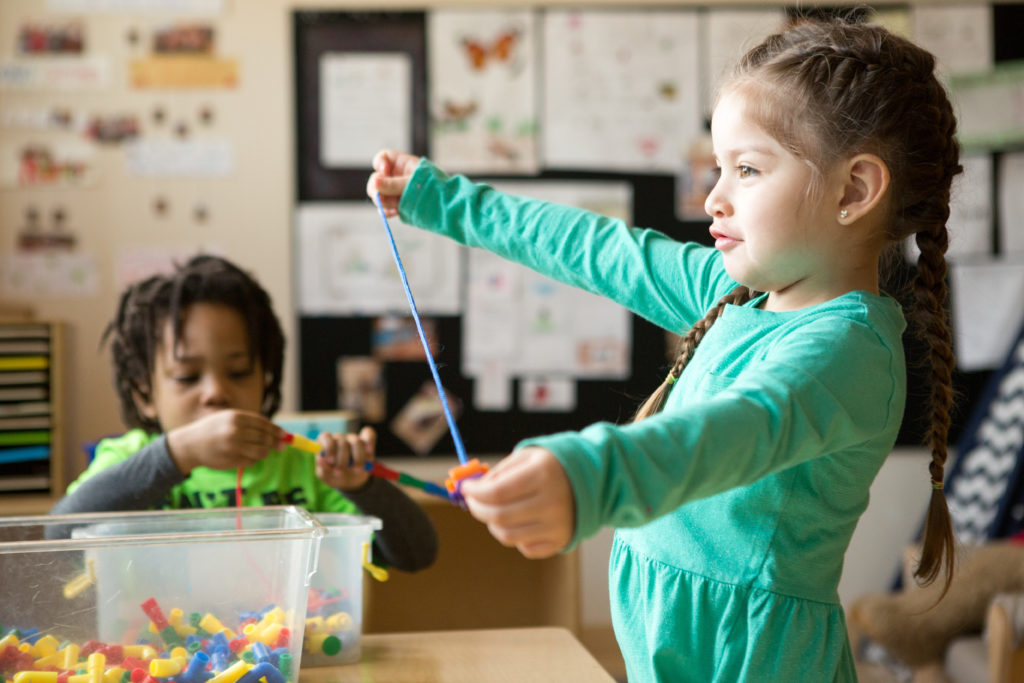
Black teachers: How to recruit them and make them stay

Lessons in higher education: What California can learn

Keeping California public university options open

Superintendents: Well-paid and walking away

The debt to degree connection

College in prison: How earning a degree can lead to a new life

California’s effort to provide all 4-year-olds in the state with one year of transitional kindergarten, or TK, by 2025 is historic and one of the largest investments state policymakers are making in our youngest learners that will pay dividends for decades to come.
Research shows that children who participate in preschool and other high-quality early learning programs are more likely to excel academically, graduate from high school and pursue higher education. This investment in universal pre-K through the expansion of transitional kindergarten is truly an investment in California’s future and positions our state as a leader with the largest universal preschool program in the nation.
By building a universal preschool system, California also has a historic opportunity to address another persistent equity gap that continues to show up in California’s education system: educational outcomes for the state’s dual language learners — students who come from a home where English is not the primary language.
Despite representing nearly 60% of children from birth to age 5 in California, dual language learners are among the most marginalized and underserved students in the state. If you look at any success measure — from graduation rates to college readiness to college enrollment — they suffer great disparities and challenges. The new universal preschool program is giving California a chance to dramatically improve outcomes for this student population if the state prioritizes them in the new system.
For California’s universal pre-K system to truly set up all 4-year-olds for success, the state must invest in a racially and linguistically diverse transitional kindergarten educator workforce. With the expansion of transitional kindergarten, it is estimated that California will need 8,000 to 11,000 transitional kindergarten teachers by 2025. These teachers will be working with students who are both ethnically and linguistically diverse. Therefore, it is critical that we staff transitional kindergarten classrooms with teachers who are able to support children’s home language because that, in turn, supports their English, bilingual, and academic outcomes.
While California has come a long way in recognizing the value that bilingual education brings to all students and the state as a whole as evidenced by the California English Learner Roadmap, it still has significant work to do in hiring more bilingual teachers. We cannot allow this pattern to repeat itself as the state prepares to staff its transitional kindergarten classrooms. California should build upon its strengths and assets as a culturally and linguistically rich state by prioritizing the training, recruitment and hiring of bilingual teachers to make up the expanded preschool system.
California’s universal pre-K system must also include a robust mechanism for identifying dual language learners early on in their educational journey and tracking their progress in order to ensure they receive needed support through bilingual staff, materials and programs. The good news is that we now have a starting point to build on with the passage of Assembly Bill 1363, which establishes a uniform process for identifying dual language learners in California’s state preschool program. This bill is bringing much-needed change to California, which despite its large population of young dual language learners, did not have a uniform way of identifying this student population in its early learning system, or monitoring their progress. Having a full picture of California’s dual language learners earlier on will allow educators and education leaders to fully address their educational needs from the onset.
The state must also invest in a broad outreach effort to reach as many parents as possible and have them take advantage of California’s universal preschool system. The data we do have shows a promising start since dual language learners and Latino students will enroll in transitional kindergarten programs at higher rates when they are made available at their local schools, but we know the pandemic has created a lot of difficulties for families, which has translated into sharp enrollment declines in early childhood education programs. That decline has been the steepest for Latino, Black and low-income students, who are also the ones that stand to gain the most from transitional kindergarten programs.
California’s universal preschool system will indeed be historic, but it must also be equitable, and state leaders must ensure that it is set up to serve the state’s ethnically and linguistically diverse students who will shape the future of our state. In doing so, California can create a national model for expanding educational opportunities for students and crafting groundbreaking policies that serve to properly identify and serve dual language students.
•••
Patricia Lozano is the executive director of Early Edge California, a nonprofit organization that advocates for policy changes and investments to expand high-quality early learning programs for children from birth to age 8. Feliza Ortiz-Licon is the chief policy and advocacy officer of Latinos for Education, a nonprofit organization supporting Latino leaders in education.
The opinions in this commentary are those of the authors. If you would like to submit a commentary, please review our guidelines and contact us.

A grassroots campaign recalled two members of the Orange Unified School District in an election that cost more than half a million dollars.

Legislation that would remove one of the last tests teachers are required to take to earn a credential in California passed the Senate Education Committee.

Part-time instructors, many who work for decades off the tenure track and at a lower pay rate, have been called “apprentices to nowhere.”

A bill to mandate use of the method will not advance in the Legislature this year in the face of teachers union opposition.
Comments
Comments Policy
We welcome your comments. All comments are moderated for civility, relevance and other considerations. Click here for EdSource's Comments Policy.